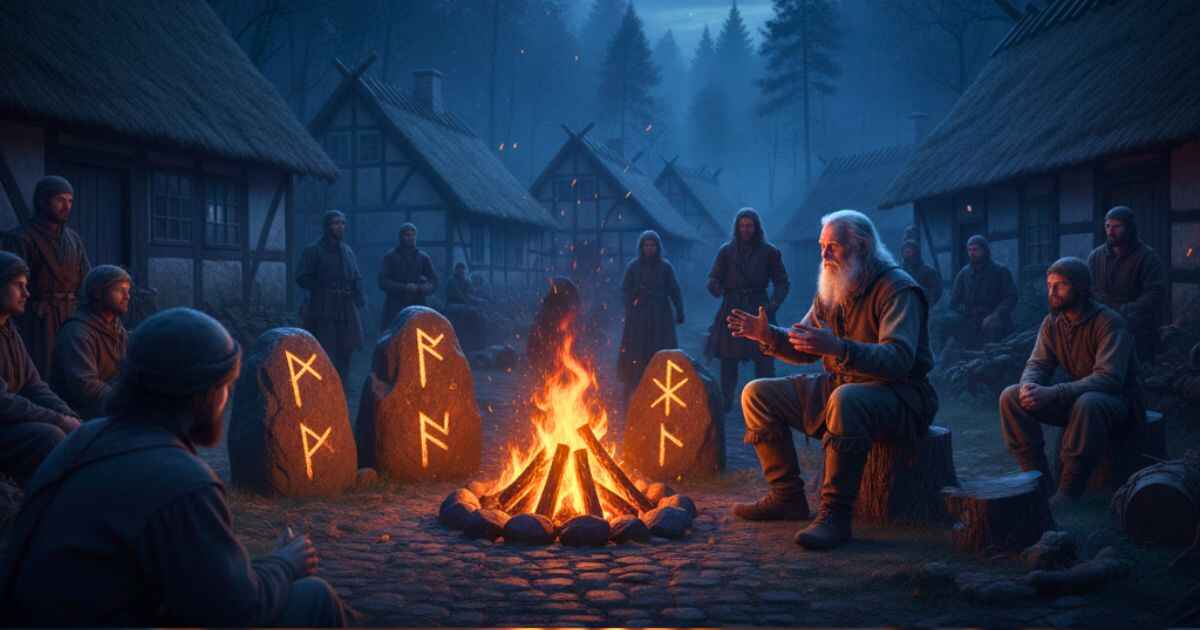Have you ever heard someone say “sagerne” and wondered what it means? This word is used a lot in Denmark. Some people use it when talking about real events, like police cases or news stories. Others use it when sharing old legends or strange tales that have been told for many years.
In this guide, we will explore both sides of sagerne. Some sagerne are true and come from danske kriminalsager, which means real crime cases in Denmark. These stories are found in newspapers, courtrooms, and history books. But some stories are mysterious, told by families and passed from one person to another. They may not be written anywhere, but people still remember them.
Why do people love these tales so much? Maybe because they make us feel curious. Some of these stories are scary. Some are exciting. Some make us ask, “Did this really happen?”
In this article, you will learn:
- What sagerne truly means
- How real cases are different from old stories
- Which sagerne became famous on TV and in news
- Why people still talk about them today
Let’s start with the simplest question.
What Does “Sagerne” Actually Mean?
The word these cases is easy to understand once you break it down. In English, it simply means “the cases.” A case can be many things. It could be:
- A legal case, when police and judges try to find out what happened
- A mystery, when no one knows the truth yet
- A story, told by people to explain something strange
In Denmark, people use these stories when talking about serious matters. If someone says, “Har du hørt om sagerne?” they are asking, “Have you heard about the cases or the stories everyone is talking about?”
There are two main types of these cases:
- Real cases — these are written down in files, news reports, or court papers. They belong to danske kriminalsager, which means crime cases from Denmark. These are facts.
- Legendary tales — these are stories that people believe but no one fully proved. They may come from old villages, scary forests, or family whispers.
So, these cases is not just one thing. It can be truth, mystery, or memory — all in one word.
Where Did Sagerne Come From? (Myths, Oral Stories & Historical Records)
From Viking Tales to Court Chronicles
Long ago, people did not have books or phones. They sat around fires and shared stories. These early stories became the first cases.
Some came from Viking villages. Warriors told tales about missing ships, strange lights at sea, or lost kings. No one knew if they were real or not, but people still believed them. This is how storytelling shaped early tales.
Later, people began to carve runes on stones. These stones had short messages about battles, family fights, or land problems. These carvings were not full books, but they helped keep historiske retssager, which means history of legal cases.
As time passed, monks and kings started writing down historiske retssalssager, or court records. These were real cases. They showed who was right or wrong. Some were about stolen sheep. Others were about big land fights.
So, sagerne did not start in one place. They came from:
- Old Viking stories told by spoken word
- Runic stones with short clues
- Written court papers made by rulers
Some stories were wild and magical. Some were real and serious. Together, they became part of Danish memory.
Types of Sagerne (Fictional vs Real)
Not all these cases are the same. Some belong to stories. Some belong to files. Knowing the difference helps us understand them better.
Storytelling Tales (Legends & Myths)
These are the fun and mysterious stories. They come from Scandinavian folk stories. People still tell them today, especially in small towns.
For example:
- A ghost horse seen on an empty road
- A golden treasure buried under an old church
- A woman who turned into a swan at night
No one can prove these happened. But people keep sharing them because they make life exciting. These tales travel from mouth to mouth. They are not written, but they live in memory.
Real-Life Cases (Police, Court & Media Cases)
These are serious cases. They belong to the real world. They come from:
- Police reports
- Court papers
- TV and newspaper stories
These are called dokumentariske kriminalfortællinger, which means crime stories based on facts. When they are shown on TV, they become drama baseret på virkelige hændelser, or drama based on true events.
These cases are checked, tested, and proved. People know who did what and when it happened.
You May Also Like: 904 Area Code – Real Calls or Scams? Jacksonville Guide
The Most Famous Real Sagerne in Denmark (With Table)
Denmark has many real cases that people still remember. Some were crime stories. Some were court fights. Some were strange events that no one could explain.
These stories were not just in books. People talked about them at home. They came on TV. They were saved in police records, called politiets arkivsager. Some became famous court decisions, called kendte danske domme. Some were never solved and became unsolved mysteries, or uløste mysterier i Danmark.
Before we see the table, here is why these sagerne are special:
- They were real, not fake stories
- They shocked many people
- Some were solved, some stayed a mystery
- They inspired books, TV shows, and real-life crime dramas, or virkelighedens kriminaldrama
Now let’s see the most known cases in a simple way.
Famous Real Sagerne in Denmark
| Case Name | Year | Type (Mystery / Court / Media / Political) | Status |
|---|---|---|---|
| The Disappearing Girl of Bornholm | 1995 | Mystery | Unsolved |
| The Silk Road Bank Fraud | 2001 | Court | Closed |
| Minister Tape Leak | 2010 | Media Scandal | Ongoing |
| The Locked Farmhouse Case | 1986 | Mystery | Unsolved |
| Copenhagen Hospital File Leak | 2018 | Political | Under Review |
Some of these cases may look small, but they became very big in the news. People wrote letters to newspapers. TV made long shows about them. Families sat together and shared their own ideas about what happened.
Why do people remember these cases for so long?
Because people want to know the truth. When a case is solved, people feel calm. But when it stays open, people keep thinking about it. That is why real sagerne never die, even after many years.
Read Our Latest Post: Rowdy Oxford Integris Secrets: Discover Fun, Safety & Innovation
Political & International Sagerne
Not all sases are about crime or mystery. Some cases happen in politics. These cases are shown in news across the world. When leaders argue, break rules, or say the wrong things, people want answers. That is how political cases begin.
Some of these stories start in Denmark. Some begin in other countries but still reach Danish TV and newspapers. When a big leader is in trouble, it becomes an international sagerne.
People follow these cases because they can change laws. They can change how the country is run. These cases are not just for drama. They can decide who stays in power and who must leave.
sagerne mod trump – Why Danish Media Covered It
When sagerne mod Trump (cases against Donald Trump) began in the USA, Danish news covered it too. Trump was not just any person. He was a world leader. His words and actions reached many countries, even Denmark.
Danish media shared updates about his trials, money issues, and court questions. People wanted to know: Can a famous leader also face punishment? Can someone in power be judged like everyone else?
This made people in Denmark think about fairness and law.
juridiske konflikter i danmark – When Law Meets Politics
There are also juridiske konflikter i Danmark, which means “legal fights in Denmark.” Sometimes a minister breaks a rule. Sometimes a party spends money in the wrong way. When that happens, the court steps in.
These cases show that even leaders must follow the rules. No one is too important to be questioned. That is how trust is kept in the system.
Also Read: SkinPres T Review: Does This Anti-Aging Cream Really Work?
FAQs
What Does the Word Sagerne Mean?
Sagerne is a Danish word that means “the cases” or “the stories.” It is often used when people talk about crime cases, legal matters, mystery stories, or important events that many people know about.
Are All Sagerne Based on True Events?
Not all these stories are real. Some are taken from real police or court records, while others come from rumors, legends, or stories that people tell without proof.
Where Can I Find or Learn About Sagerne?
You can find these cases in news articles, crime documentaries, history books, podcasts, and even online forums. Many TV shows and newspapers also cover popular sagerne.
Why Do People Still Remember Old Sagerne?
People remember old stories because they are shocking, mysterious, or still unsolved. When there is no clear answer, people keep thinking and talking about them for many years.
Can Small Incidents Also Be Called Sagerne?
Yes, even a small local fight or village rumor can be called a sagerne if people share it again and again. A case does not have to be big to be remembered.
Do All Sagerne Have a Clear Ending?
No, some cases end with a solution when the truth is found. But many stay open forever, and no one knows what really happened.
Conclusion
Sagerne are more than just stories — they are memories, lessons, and questions that never fully leave us. Some are written in court files. Some are whispered in old villages. Some come from news headlines, and some rise from legends. Whether true or untold, each one makes people think.
Why do people keep talking about these cases? Because they touch real feelings. They make us curious. They make us wonder, “What really happened?” A solved case brings peace. An unsolved one keeps the mind awake.
From crime to politics, from myths to media, these events will always be a part of Danish history and everyday talk. As long as people ask questions and search for truth, sagerne will live on.
Disclaimer:
The information in this article about sagerne is for general knowledge only. Some stories are based on historical records, while others are legends, myths, or media reports. Experiences and interpretations may vary. Always verify facts before drawing conclusions or taking action.

Joseph Quinn is a writer and digital creator best known as the founder of FreakBobTime. With years of blogging experience, he blends technology, culture, and internet humor into unique stories and creative experiments. Through his work, Joseph brings back the playful, weird side of the web while making content that connects with readers worldwide.

